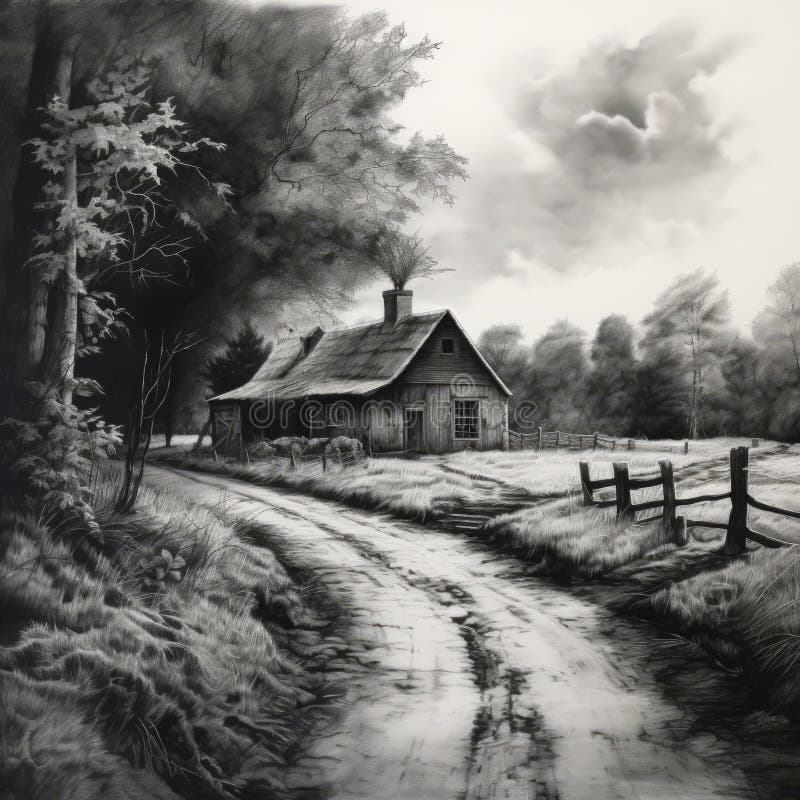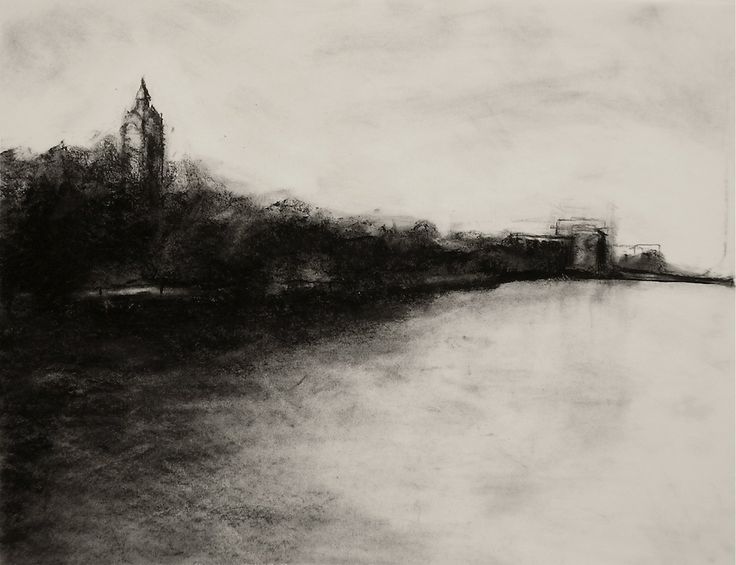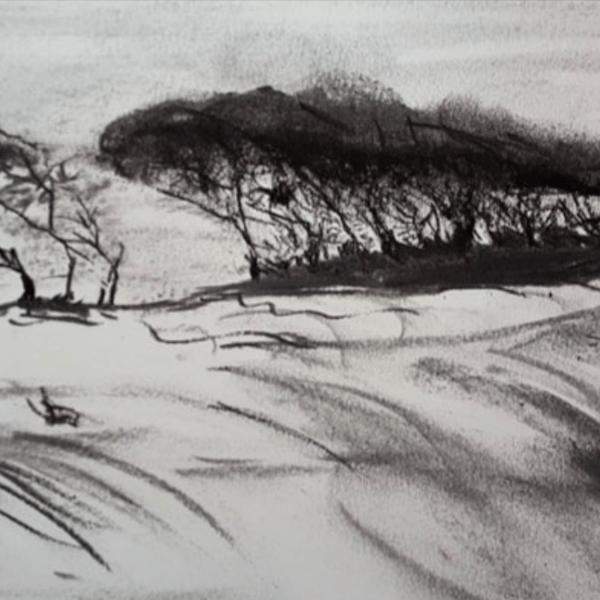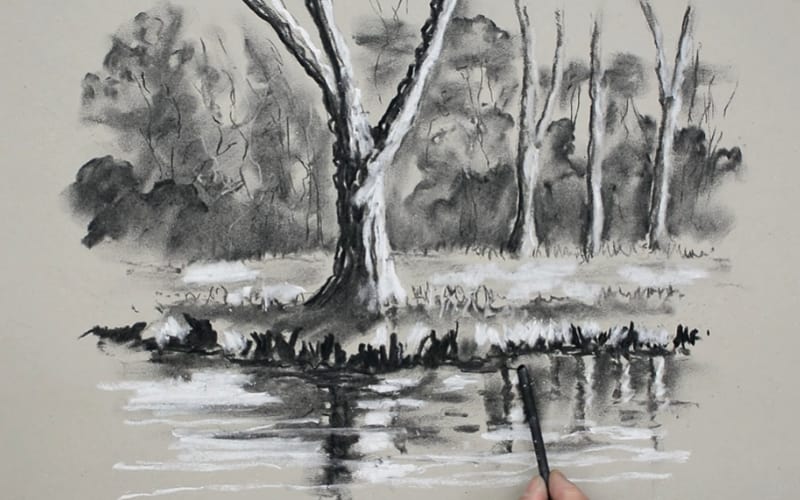Charcoal drawing stands out as one of the most expressive forms of art, offering a wide range of tones from the darkest blacks to the lightest grays. This versatility makes charcoal an excellent medium for landscape drawing, where capturing the essence of light, shadow, and atmospheric effects is essential. Mastering the art of charcoal landscape drawing involves understanding the material, experimenting with techniques, and practicing composition. This article delves into these aspects, guiding artists from choosing the right materials to creating captivating landscapes that evoke emotion and depth.
Choosing Your Materials Wisely
Selecting the Right Charcoal
The charcoal you choose significantly impacts the outcome of your landscape drawing. Artists have a variety of options, including compressed charcoal for darker, more defined lines, and vine or willow charcoal for softer, lighter strokes. For beginners, experimenting with both types can reveal which best suits their style and the particular landscape they want to capture. The choice of charcoal impacts the depth and intensity of the shadows, crucial elements in landscape drawing.
Paper Matters
The texture and weight of the paper play a critical role in the final look of a charcoal landscape. Heavier, textured paper can hold more charcoal, allowing for richer, more layered drawings. Smoother papers are better for detailed work, offering a fine surface for subtle shading and precise lines. Opting for high-quality, acid-free paper ensures the longevity of the artwork, preserving the essence of your landscape for years to come.

Techniques to Capture the Landscape
Building Layers and Textures
One of the keys to a successful charcoal landscape drawing is the effective use of layers and textures to mimic the natural environment. Start with light strokes to outline general shapes and gradually build up to the darker tones to create depth. Techniques like hatching, cross-hatching, and stippling can add texture, simulating foliage, rocks, and water surfaces. A blending stump or a piece of cloth can soften and smooth out areas, adding a misty or atmospheric effect to the scene.
Mastering Light and Shadow
Understanding the interplay of light and shadow is fundamental in charcoal landscape drawing. Shadows give form to objects and add a sense of realism to the scene. Observe how light falls on different elements of the landscape and use contrasting tones to replicate these effects. Paying attention to the source of light, whether it’s the soft light of dawn or the harsh midday sun, helps in creating a more convincing and atmospheric landscape. Remember, it’s the dark tones that give the drawing its structure, while the highlights bring it to life.

Composition and Perspective
The Rule of Thirds in Landscape Drawing
Applying the rule of thirds can significantly improve the composition of a charcoal landscape drawing. Imagine your paper divided into nine equal parts by two equally spaced horizontal lines and two equally spaced vertical lines. Placing the points of interest at the intersections or along the lines creates a more balanced and visually appealing composition. This guideline can help position elements like trees, mountains, or water bodies, guiding the viewer’s eye through the drawing.
Creating Depth With Perspective
A convincing landscape drawing captures the illusion of depth, making the viewer feel as if they could step into the scene. Use atmospheric perspective by making distant objects lighter and less detailed than those in the foreground, which should be darker and more defined. Overlapping elements and varying their sizes based on their distance from the viewer also contribute to a sense of depth.

Practice and Patience: The Path to Mastery
Experiment and Learn from Each Drawing
Each piece of art is a step in your journey to mastering charcoal landscape drawing. Experiment with different techniques, materials, and compositions. Don’t be afraid to make mistakes; they are valuable learning opportunities. Keep a sketchbook as a daily practice to refine your skills and experiment freely without the pressure of creating a finished piece.
Seeking Inspiration and Continuing to Grow
Artists never stop learning. Look for inspiration in the work of others, in nature, and in different art forms. Attend workshops, watch tutorials, and engage with a community of artists to share experiences and insights. As you continue to draw, you’ll develop your unique style and voice in capturing the beauty of landscapes through the art of shadows with charcoal.

Embracing the Dynamics of Nature
Capturing Movement and Energy
Charcoal allows for a dynamic representation of the natural elements that give a landscape its life. To portray movement – such as rustling leaves, flowing water, or scudding clouds – utilize directional strokes and erasing techniques that mimic the direction of the energy in the scene. Gentle smudging can suggest wind in the trees, while sharp, dark lines can give the impression of rushing water. Remember, your drawing is not static; it’s a snapshot of nature in motion, so infuse your landscape with the movement that you sense in the environment.
The Role of Negative Space
In charcoal drawing, what you choose not to draw can be as impactful as the marks you make on the paper. Negative space, or the empty space around and between the subjects, defines the boundaries of objects and can contribute to the overall atmosphere of the scene. Use it wisely to highlight elements of your landscape, to create a foggy morning effect, or to intensify the stark contrast between sky and land. It’s in these undrawn spaces that a landscape can breathe and invite viewers to fill in the details with their imagination.

The Importance of Critique and Reflection
Learning Through Objective Analysis
The journey to mastering the art of charcoal landscape drawing also involves critique and reflection. Analyze your finished pieces objectively, or even better, seek feedback from peers or mentors. Constructive criticism can help identify areas of improvement, be it in technique, composition, or value management. Reflect on what worked well and what didn’t. What techniques do you want to refine? Which areas of your composition could be stronger? Reflection turns experience into insight, fostering growth and improvement in your artistic journey.
Towards Artistic Fulfillment
Celebrating Personal Achievements
Every completed charcoal landscape is an achievement and a step toward artistic growth. Celebrate the milestones in your journey, including the moments of struggle that lead to breakthroughs. Whether sharing your work with others, framing a piece you’re particularly proud of, or simply recognizing your progress, take the time to appreciate your efforts. Each drawing enhances your connection with the medium and deepens your ability to convey the captivating beauty of landscapes.
Continuous Practice and Exploration
The craft of charcoal landscape drawing is one of continuous discovery and dedication. Your growth as an artist is directly tied to how much you push your boundaries and remain curious. Set aside regular intervals for practice and make it a ritual. Each session is an opportunity to explore new subjects, try different perspectives, or venture outside your comfort zone with bold, expressive strokes. The evolution of your technique is an endless adventure, rich with potential for personal interpretation and creative expression.
Mastering charcoal drawing landscape is a rewarding process that blends technical skill with creative expression. Through careful selection of materials, artists begin their work. Mastering of techniques is essential. Thoughtful composition enhances the artwork. Regular practice is necessary for improvement. Artists can create captivating charcoal landscapes. These landscapes evoke a sense of place and mood. Patience and persistence are key in art. They help in developing your skills. Finding your artistic voice in landscape drawing requires dedication. The world of landscape drawing is vast and variable.